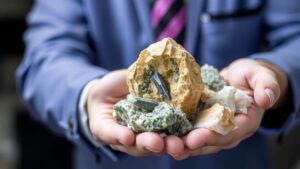How to Recover Gold from Microscopic Particles in Sand
Introduction
Recovering gold from microscopic particles in sand is a process that has gained attention due to the increasing value of gold and the environmental implications of traditional mining methods. This article will explore the various techniques used to extract gold from fine particles and provide insights into their effectiveness and environmental impact.
Understanding Microscopic Gold Particles
Gold can exist in different forms, primarily as nuggets, flakes, or fine particles. The microscopic particles often found within sands and gravels are usually released through the weathering of gold-bearing rocks.
The Composition of Sand
Sand typically consists of various minerals, but in gold-bearing areas, it may also contain traces of gold. Understanding the composition is crucial, as it affects the extraction methods used.
Gold Particle Size and Recovery Challenges
Microscopic gold particles are typically less than 40 microns in size, making them difficult to separate from sand using conventional methods. The fine size leads to challenges, such as low recovery rates and susceptibility to being lost during processing.
Techniques for Recovering Gold from Sand
There are several methods to recover microscopic gold particles from sand. Each method has its pros and cons, depending on the specific requirements of the process.
Panning
Panning is one of the oldest techniques used to recover gold. It involves using a pan to wash sand and gravel, allowing lighter materials to wash away while heavier particles, such as gold, sink to the bottom.
- Simple to use and requires minimal equipment.
- Effective for small amounts of gold but not efficient for large-scale recovery.
Using Sluice Boxes
Sluice boxes are long, inclined troughs that use water to transport sand while trapping heavier gold particles as the lighter materials flow away. They enhance the panning method by increasing efficiency.
- More scalable than panning, allowing for increased recovery volumes.
- Can be used in various field conditions.
Gravity Separation Techniques
Gravity separation techniques, such as shaking tables and jigs, exploit the difference in density between gold and other minerals to separate gold particles effectively.
- Shaking tables allow for controlled vibration, increasing separation efficiency.
- Gravity separation is often complemented by classifiers to segregate particle sizes for optimal results.
Flotation Techniques
Flotation is a process where chemicals are used to create bubbles that capture gold particles, allowing them to float to the surface for collection. This method is typically more complex and requires chemical handling.
- Highly effective for fine gold particles.
- Requires specialized equipment and knowledge.
Cyanidation
Cyanidation involves using a cyanide solution to dissolve gold from materials. This method is effective for low-grade ores and is widely used in the mining industry.
- Highly effective but poses environmental hazards if not managed correctly.
- Requires careful handling and adherence to regulations.
Environmental Considerations
Each method of extracting gold can have environmental implications. For example, cyanidation has been criticized for its potential to cause harm to ecosystems if not monitored correctly. The use of gravity and mechanical methods tends to be more environmentally friendly but still requires responsible practices.
Conclusion
Recovering gold from microscopic particles in sand is a feasible process with various methods available, each tailored to specific scenarios. While traditional methods like panning and sluicing are more environmentally friendly, advanced techniques like flotation and cyanidation may offer higher recovery rates but with increased environmental risks. Understanding these techniques aids in choosing the most suitable method for efficient and sustainable gold recovery.
Actionable Takeaway
For individuals interested in gold recovery, it is essential to consider the scale of operation, local regulations, and environmental consequences when selecting a suitable gold extraction method. Staying informed about best practices for responsible mining will not only enhance recovery efficiency but also protect local ecosystems.



